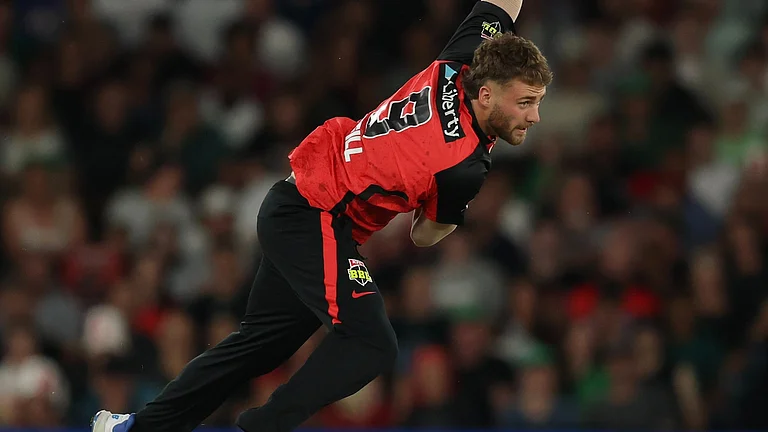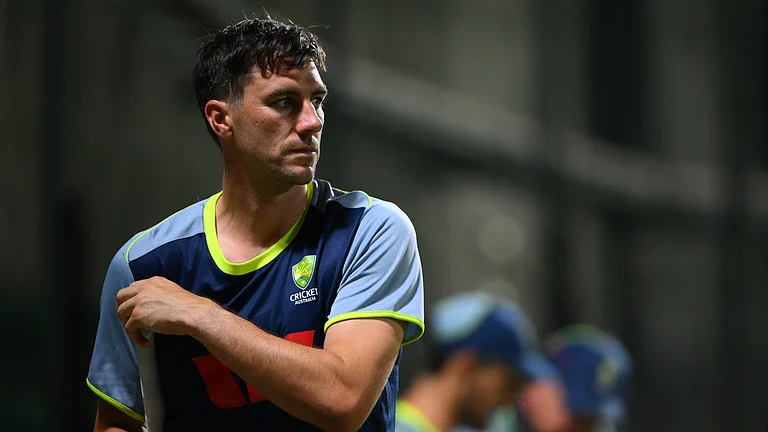Springing Jaguar
Ratan Tata, and his rapidly fulfilling list of wishes
- Has been involved in Nano rebranding; re-designing proposals for Jaguar paying rich dividends
- Becomes part of Richard Branson’s Plan-B, a group that helps business work with government and social sector
- Tata’s dream of entering aviation fulfilled; Group signs deals with Malaysia’s AirAsia and with Singapore Airlines
- Ratan Tata nominated as a member of the board of trustees of the Carnegie Endowment
***
In his first post-retirement interview in December 2012, Ratan Tata had laid out a rather busy plan for himself—flying, taking piano lessons and spending time with the Tata Group’s philanthropic trusts which he would be heading. Ten months down, he has been busier, not just with these, but by playing a major role in many of the group’s new initiatives. Though he anointed Cyrus Mistry as chairman of Tata Sons and made way for him last December, it is common knowledge that Ratan Tata’s influence reigns supreme in the steel-to-software conglomerate.
Tata had made it clear that after retirement, he did not want to have his “shadow hanging over the group; a ghost walking in the corridors...”—but it seems the group can’t do without his image and brand equity. Corporate watchers feel Mistry would have to rely on the Ratan Tata brand name till he is able to steer the group his own way. “Ratan Tata is a great advantage to the group. This is a transition period for it and his name will be there. For a group this big, there has to be a transition for some years,” says T.V. Mohandas Pai, chairman, Manipal Education.
It is thus hardly surprising that the group’s major new initiatives have happened in aviation, an area Ratan Tata has been passionate about. Last month, the Tata Group announced the finalisation of a joint venture with Singapore Airlines (SIA), a deal the group had first tried unsuccessfully over fifteen years ago. Two earlier attempts by the Tatas to get this joint venture off the ground were thwarted by competitors and their political friends. In 2010, Tata had famously said that he was asked to pay a Rs 15-crore bribe to get an aviation licence, and that an individual has thwarted his plans to set up an airline in India. He was, of course, referring to Jet Airways’ Naresh Goyal, who lobbied furiously to stall the Tatas’ aviation foray.
It was during these failed attempts that he first met PR lady Niira Radia (see box on pg 42). At that stage she was a consultant with SIA. In February this year, the Tata Group entered into a three-way joint venture with Malaysia’s fastest growing low-cost airline, AirAsia, to launch a budget airline in India. Ratan Tata is believed to have played a major role in the initiative. Says former Air India executive director Jitender Bhargava, “Behind the scene or as a hidden hand, Tata has always had an emotional connect with aviation. The group has always been keen to get into this sector.”
Apart from the obvious historical context, there’s no denying that coming from the Tatas, there is a lot of expectation that this born-again venture will improve things in Indian aviation. Aviation entrepreneur and founder of India’s first budget airline Air Deccan, Capt G.R. Gopinath, says, “Competition will bring down sky-high fares by breaking the kind of cosy cartel that seems to exist, and simultaneously improve the quality of service and product offerings. It is good news for the gloomy aviation sector.”
The government has accorded the venture ‘special treatment’—that too is Ratan Tata’s doing. For, after the announcement of the deal with AirAsia earlier this year, the UPA government had said that it would have been happy if Tata started an airline on its own. Now, the Centre is ready to fast-track the venture. “The Tatas have a passion for this business. They have tied up for logistics, seeking to get into airport management, are already into airline catering and may soon be part of budget and full-service airlines,” says Union civil aviation minister Ajit Singh. He indicated the government will soon change the law that debars a scheduled airline from flying abroad before five years of operations.
Even initial problems—like apprehensions voiced about the Tata-SIA deal by Arun Bhatia, a co-partner in the AirAsia JV—have been sorted out. Though it has Ratan Tata’s imprint all through, the Tata-SIA venture is being led by the Group’s nominees—Prasad R. Menon, who will be chairman of the venture, and the group’s brand custodian Mukund Rajan, according to a company statement. A Tata Sons spokesperson says, “The goal is to realise the original vision of launching a full-service, world-class airline that India can be proud of; the Tata group’s own contribution to the aviation industry in this country is also well-known, and the group hopes to carry forward the legacy of having launched in past decades one of the world’s most admired airlines, Air India.”
People connected to the sector feel that the Tata-SIA deal may have been pushed by the government itself. It appears the UPA is trying to make amends given the brouhaha after the Jet-Etihad deal (which led to questions about the manner bilaterals were given away by the government). By bringing in the Tatas, it could achieve two objectives. Firstly, appeasing and fulfilling Ratan Tata’s dream of getting into aviation. And secondly, helping airports in large cities that were modernised with huge investments and whose business and traffic were threatened when existing carriers were given permission to fly from smaller cities to international destinations. Finally, it helps to be in the good books of the Tatas months short of general elections.
However, not everyone is happy. A professional who has worked with Tata in the past says, “He has a patriarchal approach with which he dictated things in the group and few have the gumption to question his judgement even today. Why were the aviation deals done when the sector is going through hell?” Indeed, the Indian aviation sector is falling in growth, with every carrier, barring Indigo, bleeding heavily, including India’s largest private sector carrier, Jet Airways.
That said, no one expected Ratan Tata to be totally detached from the group’s affairs after retirement. That’s because the Ratan Tata brand equity is still the most saleable commodity across Indian and overseas investors. Corporate watcher and journalist Paranjoy Guha Thakurta says, “It is not surprising that he still calls the shots, directly or from behind the scenes. His name, his clout with the government, is still a big factor. Foreign investors know that the Ratan Tata name still carries weight in the corridors of power in New Delhi, in North and South Block and in Udyog Bhawan.”
Corporate experts believe that in a way, Tata was a victim of his own policy of setting a retirement age for his group chieftains, a policy for which he had to fight a bitter battle when he took over the reins of the group in the early 1990s.
Anyway, all the hard business hasn’t slowed Ratan Tata’s other role—to be an elder statesman and propagate the group name across the world. While Tata was involved in rebranding the Nano, his pet project, in June, he was selected among a group of industrialists and experts as part of Virgin group chief Richard Branson’s Plan-B project, which helps transform business from a profit-only focus to align with the government and the social sector. In September, he was nominated as a member of the board of trustees of the American thinktank, Carnegie Endowment for International Peace.
What then about Mistry’s report card? Experts say it’s too early yet to form a view on his first ten months at the helm of a large and diverse group. “Cyrus Mistry will obviously use the sagacity and wisdom of Ratan Tata to guide him and that remains at his disposal,” says Anirudh Dutta, former head of research at CLSA. That’s evident. But for now, all the flourishes in the Tata group are coming from the man who bears the famous last name.
By Arindam Mukherjee with Lola Nayar






















